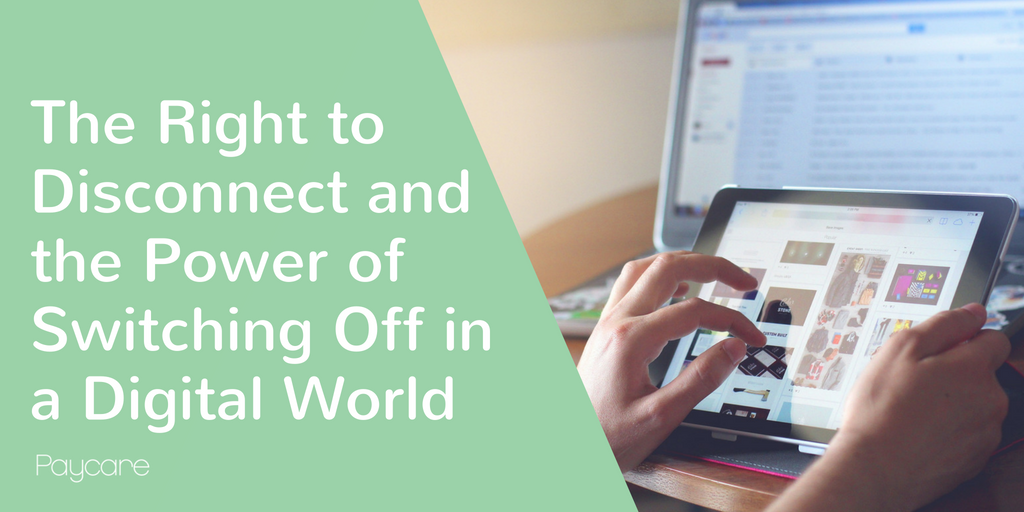Intro | Technology is hugely positive for the workplace, providing us with an ever more flexible way of working. But how much is too much flexibility? And what do employers need to be aware of when offering flexible working as a perk to their staff?
Technology has in no doubt shaped the way the workplace operates on a global scale, allowing employees to use the tools they’re provided with to work from anywhere, at any time – and often, at their most productive and motivated.
However, while that very technology has provided us with boundless possibilities and opportunities worldwide, there is another, potentially more worrying, side to the coin. Kevin Rogers, CEO of Paycare, explains while flexible working can have hugely positive benefits to an entire organisation, overuse and overreliance on it can potentially exacerbate the growing phenomenon of the ‘always on’ culture.
“The evolution of the working life in recent years, thanks to technology, has been on a scale of enormous magnitude. Perhaps one of the biggest ways it’s benefitted the workplace has been that it has allowed us all to work more freely and flexibly. For employees, the opportunity to meet family needs, reduce commuting time and fuel costs, and work hours to suit them (as we’re not all morning people after all!) can be hugely positive in making sure they work at their most productive.
Flexible Working
For employers, offering flexibility can result in increased employee engagement and commitment, reduced staff turnover and absence levels, and in some cases, the opportunity to extend opening hours – all of which can increase turnover and profitability.
It’s important to remember that offering flexible working must benefit both the business and its staff. A way to ensure that the line between personal and work life doesn’t become merged when working flexibly (and therefore the health and wellbeing of staff is protected) is by agreeing hours of work in advance and putting boundaries in place (for example, not working after 8pm).
When is it right to ‘switch off’?
There are always things to do because work never stops, and if there is no obvious cut-off point, we then run the risk of over-working – whether through pressure, responsibility, or even, for want of a better word, addiction.
Without the adequate time to relax and unwind from our daily duties, those working out of hours can experience an impact on the quality of their normal productivity as a result exhaustion, de-motivation, and most commonly, stress, depression and anxiety, which is estimated to cause the loss of 2.5million working days in the UK1.
France introduced a law recently which meant that all employers with over 50 members of staff had to guarantee their staff a ‘right to disconnect’ – a move which aims to tackle the modern-day pressure of checking emails and phone calls out of hours, and promote a healthier work-life balance, whilst tackling the ‘always on’ culture that technology has left many workers living.
Earlier this year, a New York City council member also put forward a proposal to ban employers from requiring employees to respond to non-emergency emails, texts and other digital communications outside of regular hours – and companies which violated the law would face fines of at least $250 per incident.
But with employees having access to phones, computers and the internet after they’ve left the office, how can we put steps in place to protect their health and wellbeing, and ensure that they don’t feel the pressure to connect to work out of hours?
Communication
- If your employees can access work emails from their personal phones, it’s important to make sure that push notifications aren’t enabled so that they don’t get distracted in their personal time about work-related matters. It’ll also encourage them to only access emails when they are officially in ‘work mode’
- Use different forms of communication. If the building was on fire, you wouldn’t email someone to tell them to get themselves out – so whatever is sent on email may seem important, but it’s not so important that it can’t wait for a response
- Understand the different personalities in your teams and communicate in a suitable and appropriate way. While Gen-Xers and Baby Boomers are most likely to send out-of-hours emails (and those more likely to be in managerial positions), the majority of recipients are in fact millennials who may feel under pressure to respond, even if an urgent response isn’t warranted. It’s important to be mindful of your role in contributing to negative workplace cultures, and time can absolutely be spent more efficiently
- Respect your time, and especially others. If an employee doesn’t receive an email at night, they won’t be obliged or tempted to respond. Save it for the morning or when they are working, and they’ll be ready to action from the get-go, rather than pondering on something when they should be unwinding. If this habit is practiced from the top down, employees will follow suite, which is how a positive culture is introduced and maintained.
We of course know that due to the demands of many jobs, there will be instances where working out of hours is necessary, but it’s absolutely vital that employees understand that it’s not always going to be expected of them, and for employers to recognise their employees’ willingness to go above and beyond to deliver when it is.
Technology is a fantastic thing which has evolved the ways of the modern workplace, but we need to make sure we’re digitally mindful of what impact over-use could have on our physical and mental health and wellbeing.
Until next time…
Kevin Rogers
 This month’s blog comes from an article that our CEO, Kevin Rogers, penned for Global Payroll Association earlier this year. Kevin regularly gives his thoughts on Employee Health and Wellbeing as part of our initiative to help individuals, families and businesses better look after their physical, mental and financial health.
This month’s blog comes from an article that our CEO, Kevin Rogers, penned for Global Payroll Association earlier this year. Kevin regularly gives his thoughts on Employee Health and Wellbeing as part of our initiative to help individuals, families and businesses better look after their physical, mental and financial health.
To find out how your business could benefit from a Health Cash Plan, check out our corporate plans.
Join the conversation on Twitter: @Paycare
References
1 | 2.5 million working days lost – https://www.hse.gov.uk/statistics/causdis/stress/
2 | WHO – https://www.huffingtonpost.com/gina-soleil-/workplace-stress-the-heal_b_8923678.html

